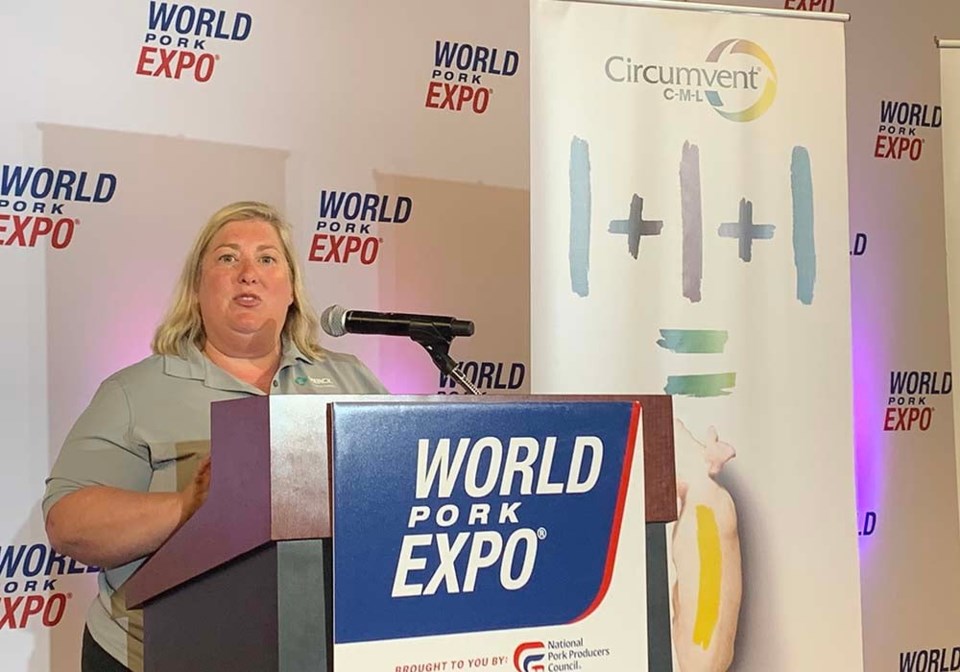DES MOINES, Iowa — It might sound easy to take three vaccines, mix them up and stick them in a bottle.
It’s anything but in the real world of scientific limitations, commercial management and regulatory requirements.
That daunting combination was on display when Merck Animal Health unveiled its Circumvent CML vaccine. Multiple studies examining the shot’s ability to control porcine circovirus (PCV2), mycoplasma hyopneumoniae and lawsonia intracellularis were required to both prove the new combination works and is safe.
“That just take a long amount of time,” said Dr. Brett O’Brien in an interview at the World Pork Expo in June.
PCV2 has been a plague on the North American hog industry for almost two decades, crippling many farms before the first vaccine became available. Lawsonia causes ileitis and is another common problem for young pigs and farm management. Mycoplasma is a widespread pig health challenge that vexes producers everywhere.
Vaccines for these diseases have improved pig health, but having to give young pigs multiple injections can be a strain on both a pig’s immune system and the time and morale of hog barn staff.
“We’ve responded to our customers’ requests to help them protect the pig from disease while reducing stress on the people and the pig, and reducing overall labour required,” said Dr. Scott Stelhik.
PCV2 hasn’t stood still since arriving in North America. It has evolved with many strains, some causing significant health problems for pigs.
For most of the 2000s, PCV2a was the main problem, but by the end of the decade, PCV2b had supplanted it in clinical cases. In 2012, PCV2d was first seen in the United States, soon becoming the dominant problem-causing strain.
The Circumvent vaccine was designed to create resistance to these strains.
According to O’Brien, much work went into concentrating the trivalent vaccine so that it not only could provide an immune response with one shot, but that shot could also be made smaller and less bothersome to the pig.
From earlier versions that were administered with a four millimetre injection, the new Circumvent CML requires just a two millimetre dose.
There are other multivalent livestock vaccines on the market, but this is the first that combines material for resisting these three diseases, Merck says.
It is first being made available in the U.S. but then it is expected to be expanded to other countries, including Canada.

